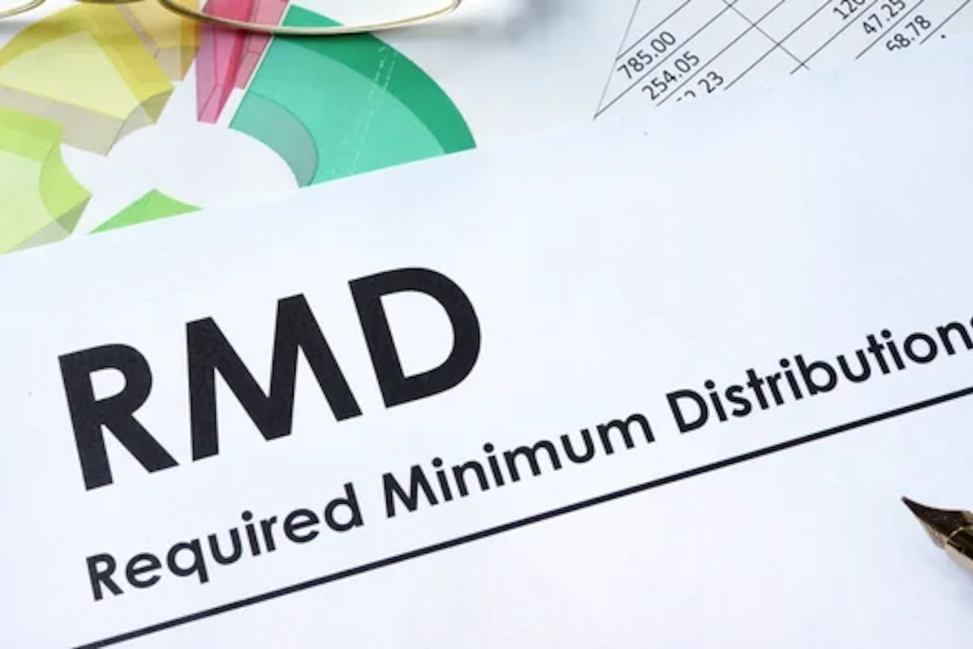Whether you’re a seasoned investor or just getting started, you’ve likely heard one piece of advice repeatedly: diversify your portfolio. Ditching a bare-bones portfolio with only stocks and mutual funds in favor of one with alternative assets like precious metals has the potential for higher returns.
Long considered a reliable long-term investment asset, precious metals like gold have been viewed as a hedge against inflation.
Unfortunately, most Traditional and Roth IRA accounts do not allow gold investing.
How can you add gold to your IRA? Is it a good hedge against inflation? Here’s everything you need to know about Gold IRA investing.
What Is a Gold IRA?
A gold IRA is an individual retirement account in which investors can hold gold and other precious metals such as silver, palladium, and platinum. When you open a gold IRA, you have the option to include the following assets:
- Gold bullion and coins that meet IRS requirements, including fineness and purity
- Other precious metals, such as silver, palladium, and platinum
- Gold and precious metal commodity futures
- Gold-related stocks, exchange-traded funds (ETFs), and mutual funds
Gold IRAs are typically unavailable through traditional brokerages. Unlike a regular IRA, you’ll need to work with a custodian specializing in gold IRAs via a self-directed IRA.
These custodians will be trained in rules surrounding gold investments, including physical gold assets, not just stocks.
For example, a qualified custodian will oversee the administration of the gold IRA, helping ensure your investment meets tax and paperwork requirements. They will also assist in transferring and storing assets, as physical gold must be held in a national depository or another approved holding entity.
What Is the Best IRA for Gold?
You cannot hold gold or any precious metal in a regular IRA account.
If you want to invest in precious metals, including gold, you must open one of the following IRAs
Traditional Gold IRA
Also known as a precious metals IRA, traditional gold IRAs allow you to hold physical gold in your account, including gold bars and coins. As with all your assets, any gold appreciation will enjoy tax-deferred status until withdrawals are made after retirement.
Roth Gold IRA
Unlike traditional gold IRAs, Roth Gold IRAs use after-tax dollars as contributions, allowing investors to enjoy tax-free growth until they withdraw upon or after retirement. This type of IRA will enable you to better enjoy gold appreciation over time with no tax surprises later.
Self-Directed Gold IRAs
Self-directed Gold IRAs allow you to expand beyond basic stocks, bonds, and mutual funds into alternative assets like real estate, tax liens, cryptocurrency, and precious metals like gold. Unlike traditional IRAs, account holders can exercise checkbook control by opening an IRA-LLC to make investment decisions without consulting a custodian, as long as they adhere to IRS rules and regulations.
SEP Gold IRA
Short for Simplified Employee Pension Gold Individual Retirement Account, a SEP Gold IRA is designed for freelancers and small business owners. The employer makes tax-deductible contributions up to a percentage of an employee’s salary (e.g., 3%). Automatically deposited into IRAs on a set schedule, employees can enjoy tax-deferred investment growth until distributions are taken in retirement.
Is a Gold IRA a Good Investment?
Gold can be a good investment, whether in bullion form or traditional investment, like gold stocks, ETFs, mutual funds, and commodity futures. Here are some of the primary benefits of investing in gold:
- Gold can provide reliable long-term growth. And though there may be periods of volatility, its value tends to bounce back quickly.
- Holding gold in your IRA hedges against drops in other investment assets. Investment experts often point to gold as a way to stabilize your portfolio in case of a stock market crash or major inflation.
- Gold is generally considered liquid, making it a flexible asset.
- Gold trends in the opposite direction of the US dollar, providing investors a safeguard against drops in the value of world currency.
Every investment asset has its benefits and drawbacks, and gold is no different. If you’re considering gold, remember that in its physical form, gold carries additional rules and requirements for purchase and storage. In addition, you’ll also likely see additional fees associated with a gold IRA, including storage fees and potential buyback fees.
Pros and Cons of Gold IRA Investing
| Pros | Cons |
| Diversifies your portfolio | Stricter rules and regulations surrounding investment |
| Hedges against inflation and stock market crashes | Additional fees may be applied |
| Liquid asset | Investment in physical gold requires a specific type of IRA |
Gold IRA Rules
When you invest in gold, especially in its physical form, it’s essential to be aware of the IRS rules that govern precious metal investment.
To qualify as an IRA asset, gold must meet the following standards:
- Only at least 99.5% pure gold is considered qualified for holding in a gold IRA. Silver must be 99.9% pure, and palladium must be 99.95% pure.
- Gold bullion and other collectible forms that qualify for IRA holding must be stored in an approved depository. Precious metals purchased by an IRA (or its corresponding LLC) cannot be held in an individual’s home or other unqualified location.
- Gold bars, coins, and rounds must be produced by the national government mint or by an accredited or certified refiner, such as NYMEX, ISO 9000, or LBMA.
- Bullion bars must meet exact weight specifications, except for 100-ounce gold and 400-ounce gold bars.
- Gold held in a traditional self-directed IRA is treated like any other asset, and you must begin taking required minimum distributions (RMDs) at 72. You can take a gold RMD by requesting the gold be shipped to you or by liquidating your gold and receiving a monetary payment.
Setting Up a Gold IRA
By setting up a gold IRA, you can enjoy several benefits, including appreciation and a hedge against inflation.
Here’s a quick tutorial on how to set up a gold IRA:
Research IRA Options
The first step in setting up a gold IRA is researching your options. You can choose from one of four IRA types: traditional, Roth, self-directed, and SEP. Each has advantages and disadvantages, with tax-deferred growth (traditional IRA) and tax-free growth (Roth IRA). Choosing the one that best fits your tax setup and retirement timeline is essential.
Open an Account with a Broker or Custodian
The next step is to open an account with a broker or custodian with years of experience, low to moderate fees, responsive customer service, and thorough knowledge of IRS-approved depositories to keep your physical gold secure.
Choose Gold Investments
The last step is to select an approved type of gold. Two of the more popular choices are gold coins and bars, such as American Gold Buffalo, Canadian Gold Maple Leaf, and Credit Suisse Gold Bars. Each has its specifications. For example, American Gold Eagle coins are 22-karat gold, and the Canadian Gold Maple Leaf is known for high purity levels (99.99% gold).
If you need clarification on whether gold coins and bars are IRS-approved, a trusted custodian like Horizon Trust can help you decide.
How is a Gold IRA taxed?
How your Gold IRA is taxed depends on your IRA type. With a traditional IRA, your gold is purchased with pre-tax dollars. When you take a distribution, it will be subject to income tax. If you buy gold through a self-directed Roth IRA, you pay for the asset with post-tax dollars, and you will not owe income tax when you take a qualified distribution.
All contribution limits apply because self-directed IRAs are held to the same tax rules as a regular IRA. That means you can contribute up to $7,000 ($8,000 if you’re over 50) annually as of 2024. Contribution limits are subject to change, so always check with the IRS for the most up-to-date information.
In addition, early withdrawal penalties may also apply if you have a traditional SDIRA and make an early withdrawal. If you have a Roth SDIRA, you can withdraw an amount equal to or less than your existing contributions without penalty, but you may be penalized for withdrawals on interest.
Both types of IRAs make exceptions for certain withdrawals, such as those meant to pay for the purchase of your first home or unreimbursed medical expenses without penalties.
Start Your Gold IRA Today
If you’re considering investing in physical gold, it’s a good idea to speak to an investment expert who can help you understand the role gold can play in your retirement account and long-term investment needs.
Rely on Horizon Trust. With tons of experience in gold IRA investing and other precious metals, we understand the additional tax reporting and management requirements unique to this type of investment.
FAQs
What are the fees associated with a Gold IRA?
Expect fees to vary depending on your custodian and the type of investments.
For starters, most Gold IRAs require a one-time setup fee and custodial fees, which may cover a combination of administrative, transaction, and annual maintenance fees. Any management fees typically comprise a percentage of your overall asset value held under management.
Your gold will also be insured and stored in an IRS-approved depository, requiring storage fees. Any gold or other precious metals sales will also incur purchase and sales fees.
Other types of fees are situational (e.g., transfer fees when moving funds from one retirement account to your Gold IRA).
For a thorough understanding of all fees, we recommend choosing a provider experienced in fee schedules and a thorough understanding of the terms and conditions specific to each precious metal type. Depending on value and dozens of other factors, different precious metals have higher or lower costs.
Can I take physical possession of the gold in my Gold IRA?
You can physically possess the gold in your gold IRA after the age of 59½. Otherwise, you will need to store your gold in a depository or legally compliant facility. If you need clarification on the implications of taking this step, it is best to consult with a highly experienced Gold IRA custodian like Horizon Trust.
Is gold a safe investment in times of economic crisis?
One of the most popular assets Americans turn to in times of economic crisis is gold. It has long been considered one of the leading stores of value out there, effectively working as a hedge against inflation. The increasing price of gold offsets any dips in the value of paper currency.
When adding gold to an IRA, it allows you to better diversify with quick conversion to cash if needed.




